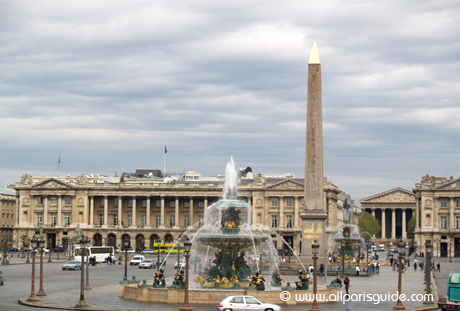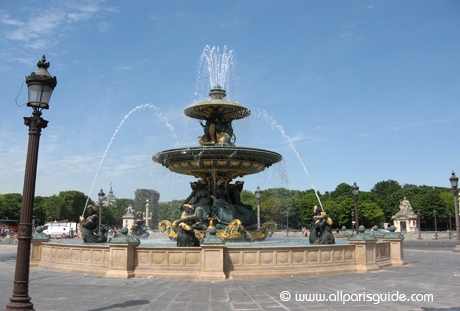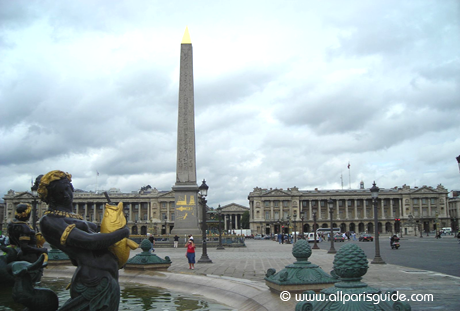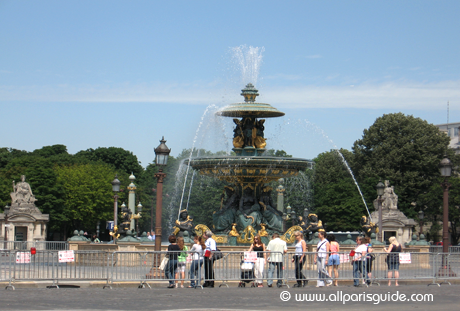Once a swamp, now Paris‘s largest square, trhrobbing with traffic and fumes, the Concorde was designed in 1775 chiefly to accommodate an equestrian statue of the reigning king, Louis XV. It soon changed name and function when the guillotine was trundled out. As the place de la Revolution it saw over 1,300 heads roll, inclunding Louis XVI, Marie-Antoinette, Danton, and Robespierre. The architect, Jacques-Ange Gabriel, also designed the two properties flanking the rue Royale, one of which survived the Revolution in the hands of the Comte de Crillon, and is now the Hôtel Crillon.
With the cooling of revolutionary passions in 1795, the square was renamed Concorde and soon acquired Coustou’s Chevaux de Marly at the entrance to the Champs-Elysées. The next transformation came in 1833 under Louis-Philippe, when he was presented with a 75 foot, 3 000 year old obelisk by Mohammed Ali, viceroy of Egypt. Gabriel’s eight stone pavilions, each topped by a statue depicting a French town in human guise, still remain.





